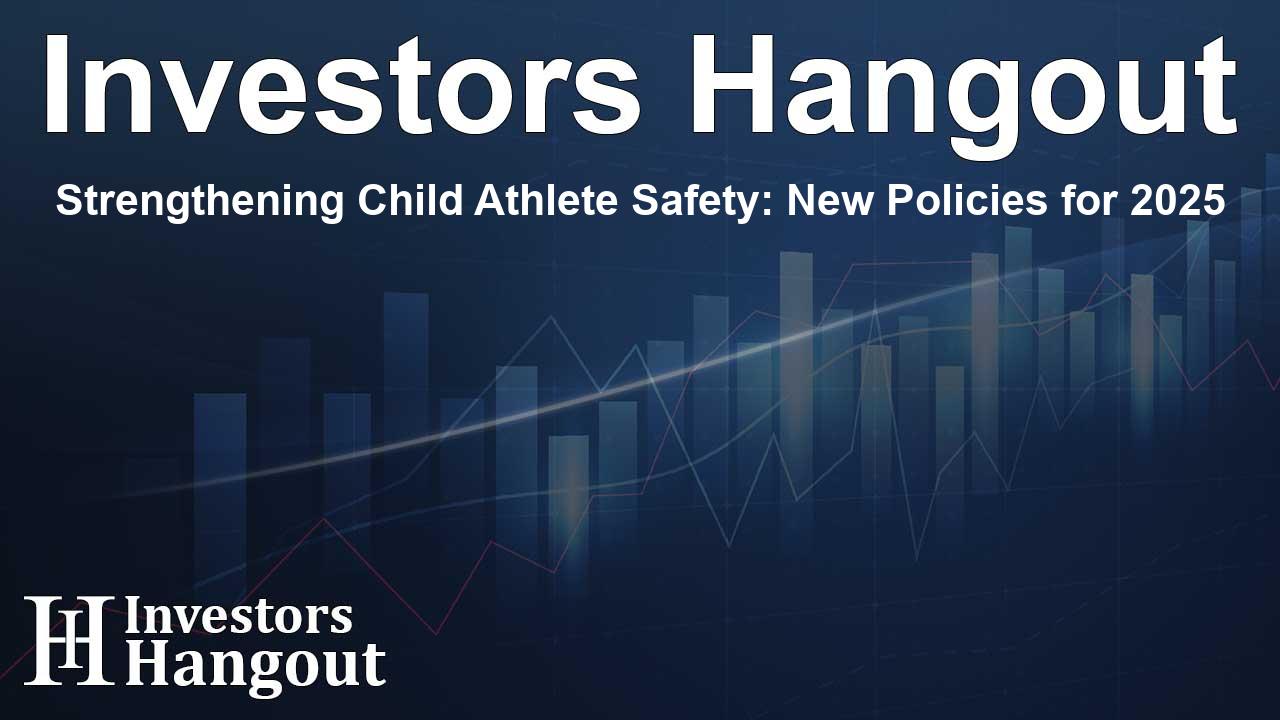Strengthening Child Athlete Safety: New Policies for 2025

Introduction to the 2025 Minor Athlete Abuse Prevention Policies
The U.S. Center for SafeSport has officially rolled out the 2025 Minor Athlete Abuse Prevention Policies (MAAPP), a crucial initiative aimed at enhancing the safety and well-being of young athletes involved in sports. These guidelines, effective January 1, 2025, establish a national framework designed to protect minors from abuse and misconduct in the sports realm, particularly within the Olympic and Paralympic movement.
Importance of the MAAPP
The MAAPP is a groundbreaking establishment in the world of sports safety, very much needed in an era where the welfare of young athletes must be prioritized. As national governing bodies (NGBs) within the U.S. Olympic and Paralympic system adopt these minimum standards, it is crucial to understand the components and implications of these policies. By laying down these fundamental rules, the Center promotes a safer environment for young athletes participating in various sports.
Compliance and Accountability
The enforcement of the MAAPP will be monitored through regular audits conducted by the U.S. Center for SafeSport. This ensures that compliance is maintained across various sports organizations, refreshing their commitment to the safety of the athletes they oversee. These audits will allow the Center to track the progress and adherence of NGBs to the policies and help identify areas for improvement.
Components of the MAAPP
Designed to address and mitigate potential risks, the MAAPP is structured around three main components, each crucial to fostering a safe sporting environment. These elements work collectively to guide organizations in their efforts to protect young athletes from the potential for abuse and misconduct.
Education and Training
The first key component focuses on education and training. It mandates that adult participants with regular contact or oversight over minors undergo specific training geared towards recognizing, preventing, and responding to abuse. This proactive approach emphasizes the importance of awareness, enabling all involved parties to actively participate in safeguarding the athletes.
Organizational Requirements
The second component introduces rigorous organizational requirements for the USOPC, NGBs, and local affiliated organizations (LAOs). These requirements stipulate the need for tracking training completions and the consistent application of prevention policies across all levels of governance in sports. Such measures help reinforce a culture that prioritizes the safety of young athletes.
Required Prevention Policies
The last crucial aspect encompasses the required prevention policies, which include seven targeted policies tailored to the unique environment of sports. This set of regulations covers prohibitions on one-on-one interactions between adults and minors, rules around lodging and transportation, and guidelines on digital communication to minimize risks.
Quotes from Leadership
Leaders within the SafeSport initiative have expressed their commitment to effecting change throughout the sports community. Ju’Riese Colón, CEO of the U.S. Center for SafeSport, highlighted that the MAAPP represents a national standard in protecting young athletes, urging sports organizations to adopt these policies to foster a safer atmosphere for all athletes.
Hannah Hinton, Vice President of Organizational Development & Compliance, echoed this sentiment, stating that true cultural change requires accountability at all organization levels, from leadership to coaches and young athletes themselves. The MAAPP serves as a framework that brings attention to abuse risks and offers necessary protective measures.
Concluding Remarks
The MAAPP, updated every three years, continues to evolve in response to the needs of the sports community. The updates made this time are relatively minor, reflecting the necessity for these guidelines to remain relevant while remaining anchored to their foundational principles developed in previous iterations.
About the U.S. Center for SafeSport
The U.S. Center for SafeSport was created to uphold athlete safety across all levels of competition. Seeing a need for focused measures to mitigate abuse incidents in the Olympic and Paralympic realm, the Center has been instrumental in setting safety policies and providing educational resources for organizations throughout the sports landscape.
Frequently Asked Questions
What is the MAAPP?
The Minor Athlete Abuse Prevention Policies (MAAPP) are guidelines established to protect young athletes from abuse and misconduct in sports.
When do the new policies take effect?
The updated MAAPP policies will be effective from January 1, 2025.
Who enforces the MAAPP?
The U.S. Center for SafeSport is responsible for auditing compliance among sports organizations with the MAAPP.
How often is the MAAPP updated?
The MAAPP is reviewed and updated every three years based on stakeholder engagement and evolving needs.
Why are these policies important?
The MAAPP is critical in establishing a national standard for youth athlete protection, promoting a safer environment for all involved in sports.
About The Author
Contact Olivia Taylor privately here. Or send an email with ATTN: Olivia Taylor as the subject to contact@investorshangout.com.
About Investors Hangout
Investors Hangout is a leading online stock forum for financial discussion and learning, offering a wide range of free tools and resources. It draws in traders of all levels, who exchange market knowledge, investigate trading tactics, and keep an eye on industry developments in real time. Featuring financial articles, stock message boards, quotes, charts, company profiles, and live news updates. Through cooperative learning and a wealth of informational resources, it helps users from novices creating their first portfolios to experts honing their techniques. Join Investors Hangout today: https://investorshangout.com/
The content of this article is based on factual, publicly available information and does not represent legal, financial, or investment advice. Investors Hangout does not offer financial advice, and the author is not a licensed financial advisor. Consult a qualified advisor before making any financial or investment decisions based on this article. This article should not be considered advice to purchase, sell, or hold any securities or other investments. If any of the material provided here is inaccurate, please contact us for corrections.
